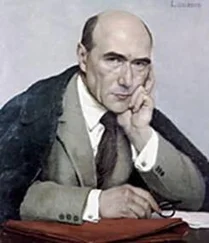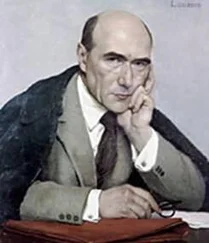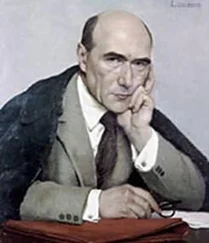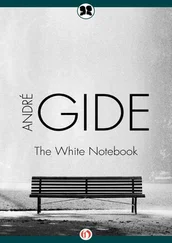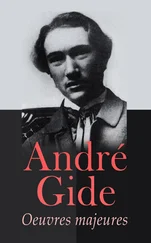As I write, twenty examples come immediately to my mind, weakening my assertions. But the critic or the historian, like the painter, can not and should not take into account all the shades and all the lines; to draw is to choose. Have I drawn badly? I don’t think so. In any case, it is Poussin who invited me do better than quote from it, and all the more willingly since the text is little known. Speaking of Poussin, Brienne first mentions rapidly “his pictures a little too nude,” Danae, Galatea or The Sleeping Venus, “and a thousand others of this nature, where the nude is a little too uncovered in view of the correctness and modesty of French manners and customs”; then, in regard to a Venus by Titian, he writes: This picture, although excellent, deserves to be burned, for one could not look at it … without emotion. I should have had it covered with a veil if it had been mine, just as I had Monsieur de Cany cover with a cloth Poussin’s beautiful Venus that caused me so much trouble in the seminary where I am, although this picture, excellent and one that could be viewed by everyone in the state in which it now is, is nevertheless never displayed.” And Brienne adds: “In the homes of the cardinals in Italy, I have seen just as nude and less chaste ones. But in France nudes are no longer tolerated.” Painting, if not pious, or at least austere, had to be hidden.
Let us permit Louis Hourticq to assert: Poussin has “never touched on religious painting except on order and to serve the personal devotion of the giver.” Neither his tastes nor his convictions led him in that direction. Others will notice too that the religious scenes he introduced into painting are among the least moving of his works; he forces himself of our senses; it is profound, durable, and the sort of serenity that I get from it ennobles me. I have only to enact the ideas of Poussin, I wrote; all the same, my reason too is touched here, giving consent to my joy, to the reconciliation of mind and senses in one supreme harmony.
Poussin does not search for that harmony in the expression of felicity alone; he likes to impose it in the tumult; he even obtains it in the horrible in the style of the tragic Greeks, and is not afraid to represent massacres, corpses and plague-stricken scenes. With the result that I doubt there would have been such violent aversion to Gericault’s Raft of the Medusa as Ingres, his younger cousin, was to manifest later.
Just the same, it is the felicity in his work that carries me away, a joy sensuous and spiritual at the same time. If we find in France almost none of the mythological nudes in his first style, before the Roman gravity that he liked to paint at the time of his long sojourn in Paris, if those canvasses of a bewitching lewdness, have gone astray in museums or private galleries abroad, the reason (one of the reasons) has been given to us by his contemporary, Louis-Henri de Loménie, Count of Brienne, in a manuscript dating from about 1694, discovered and published recently by Louis Hourticq; I could not tention to instruct. The contemporaries of Poussin were not deceived by it; and for a long time after his death, one proved himself connoisseur in painting by explaining his pictures: not a gesture without motive, they revealed his subtle intentions; the painting was presented as a sort of picture-puzzle, for which it was necessary to find the key to be able really to admire it. After which, one would have tired of them, had their value not been, properly speaking, pictorial. Paltry teaching of a work of art, if it had had to be limited by the solution of petty problems.
The teaching I draw from it is very different. Doubtless it is Poussin’s spirit speaking to me; but it is less to my mind that he speaks than to something very deep within me, that I don’t know whether to call soul or will. He invites me to a very particular contemplation of nature that is only permitted to works of art, music, painting or poetry; to what Poussin himself calls “delight,” the only aim, according to him, of his works. And I should like to add to that word an epithet: persuasive delight; a delight by which, as I emerge from it, my vision of the exterior world and even my demeanor recognizes itself changed.
The joy that comes to us from the contemplation of certain canvasses of Poussin is not only the delight to say all of the above; for I think it he came back to earth, that is how he would speak.
To tell the truth his ideas concern us scarcely at all and I can not make much of them. Nothing surprising or revealing in his aphorisms on his art, nor in his famous Principles, so often quoted. All that goes without saying. It is only by studying the ideas of a painter that we get them; as those of the musician, only when they come into sonorous existence. Even a poet’s ideas are of value only when they fill out and animate fine poetry. Otherwise the most sublime prophecies, even of a Hugo, irritate me; I don’t know what to do with them and I can’t take them seriously. As for the thinker, Sully Prudhomme, I abandon him to his ruin. Poussin’s idea has no value except it become plastic, and he transmit it to us pictured. But once that is said, let us recognize that it is the thought that motivates and animates all his pictures. That is what determines the grouping of his figures and their gestures, the movement of the lines, the distribution of the light, and the choice of colors. There is nothing, not even the leafing of the trees in his huge landscapes, that does not seem an emanation because of its balance and the serenity that it breathes.
And never more than in him has painting shown itself more tractable in spirit, or shown such an into them. 1In his Jesus in the Garden of Olives, the indiscreet introduction of cherubs, bearers of instruments of torture, takes away all solemnity from that ultra-pathetic scene, and Paul Desjardins has every reason to write: “The unreality and playfulness of that conception wound like profanity.” But Poussin is not conscious of it; there is no desecration in it for him, because there is no preliminary consecration. No mystical emotion takes part in that play of the spirit. He is, and remains reasonable; cartesian, it could be said, even before the influence of Descartes began to be felt. No anxiety in him, except concerning his work; no secret torment, no appeal to redemption, no need for recourse to the supernatural, to grace.
It will be said we are not any more conscious of the religious sentiment in the religious pictures of Rubens or Van Dyck, of Titian or of Raphael who, like Poussin later, found himself fully at ease only on the Greek Parnassus, and painted with the same brush, with a serene indifference, The School in Athenes or The Dispute over the Holy Sacrament. In not one of them is there any of that inexpressible mystical emotion that illuminates the little canvas of Rembrandt for instance; The Disciples at Emmaus. In any case, that assertion would be of very little importance if Poussin, like Courbet or Manet, saw and made us see nothing beyond the subject matter and had dreamed only of glorifying it. But that is not the case; don’t let us be deceived by it; Poussin is an anti-realist painter; there is no one more spiritual or idealistic than he. There is not one who transports humanity more resolutely and more spontaneously at the same time, above itself. And of course I am not speaking of his Assumption of the Virgin or the Rapture of Saint Paul, in which angelic efforts cooperate. A strange thing, as to the mystical feeling of which Poussin was capable, it is in his Inspiration of Anacreon (or in his Inspiration of the Poet, although a little less perceptible) that, unexpectedly, I find it. Pagan mysticism, needless to say, but alive and sincere, and such as one would not imagine different if, instead of quenching his spiritual thirst at the cup of poetry the god holds out to him, he should slake his thirst at the communion cup. He has the gesture of offering, the ecstatic look of the communicant. And nothing is more revealing than this admirable work 1that moves us by its extraordinary beauty, doubtless, but also like a confession.
Читать дальше

